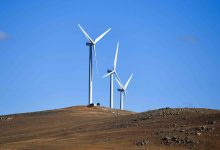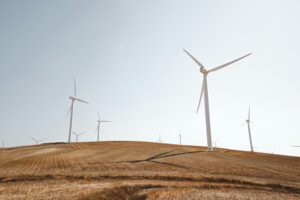Community complaints about wind farms fell dramatically in 2021, new data reveals, including a “significant reduction” in concerns about low frequency noise or vibrations coming from operating wind turbines.
The annual report from Australia Energy Infrastructure Commissioner Andrew Dyer, tabled in federal parliament on Thursday, shows that a total of 63 complaints related to wind farms, both proposed and operational, were lodged with the office over the course of the year.
That’s a huge dip compared to 2020 numbers, when wind farm complaints for the year totalled 230 – and quite a big turnaround, considering the Commissioner’s role was originally created exclusively to deal with gripes against wind developments.

Indeed, as RenewEconomy reported on Thursday, wind power came off looking comparatively popular against transmission projects in 2021, with the AEIC recording 111 complaints from residents and landholders over plans for major new grid infrastructure builds.
But perhaps most interestingly, over the last four years the Commissioner’s office has not received any complaints at all regarding allegations of vibration sensations being caused by a wind turbine’s operation, and a major reduction over time in complaints about low-frequency noise.
So could claims of so-called “wind turbine syndrome” be a thing of the past? Well, not entirely.
While only 14 of the 63 wind farm complaints lodged with the Commissioner’s office in 2021 were related to operational projects, a number of these did still include references to health impacts from spinning turbines.
“Health conditions cited in complaints include sleep disturbance, headaches, ear-aches, ‘pounding’ in the ears, tinnitus, tachycardia, high blood pressure, sight impairment, diabetes, chest-tightening, nausea and general fatigue,” the report notes.
“The complainants generally state that such conditions are caused by audible noise and low frequency noise, including infrasound, along with vibration sensations allegedly attributable to the operation of nearby turbines.
“In some cases, complainants have stated that some health conditions are persisting even when the turbines are not operating,” the report says.
But Dyer notes that “for the last four years, the Office has not received any complaints regarding allegations of vibration sensations being caused by a wind turbine’s operation.”
And he also stresses that his office’s findings could not confirm any actual evidence of vibrations at a residence with causality from a turbine.
“Further, recent research from Flinders University indicates that the source of vibrations being sensed by persons living near wind farms is unlikely to be from the wind farm’s turbines,” the report continues.
“There may be other sources of noise as a result of the project’s operation, in particular noise that would emanate from the electrical infrastructure, including power substations, transformers and back-up generators.”
In terms of addressing health-related wind farm complaints, Dyer notes that while numerous invitations have been extended to complainants to provide evidence of their medical conditions, most have provided only anecdotal evidence on stated health issues and “perceived causality,” making the claims difficult to assess.
He says that since the AEIC Office was created back in 2015, a total of 92 complaints about operating wind farms have been received – relating to just 22 operating wind farms – and roughly half of these cited concerns about health impacts from the operating wind farms.
“Of these, a very small number of complainants agreed to work with the Office and provide evidence of the stated health issues. In all of these cases, the root cause of the stated health issue was not attributable to the wind farm,” he says.










